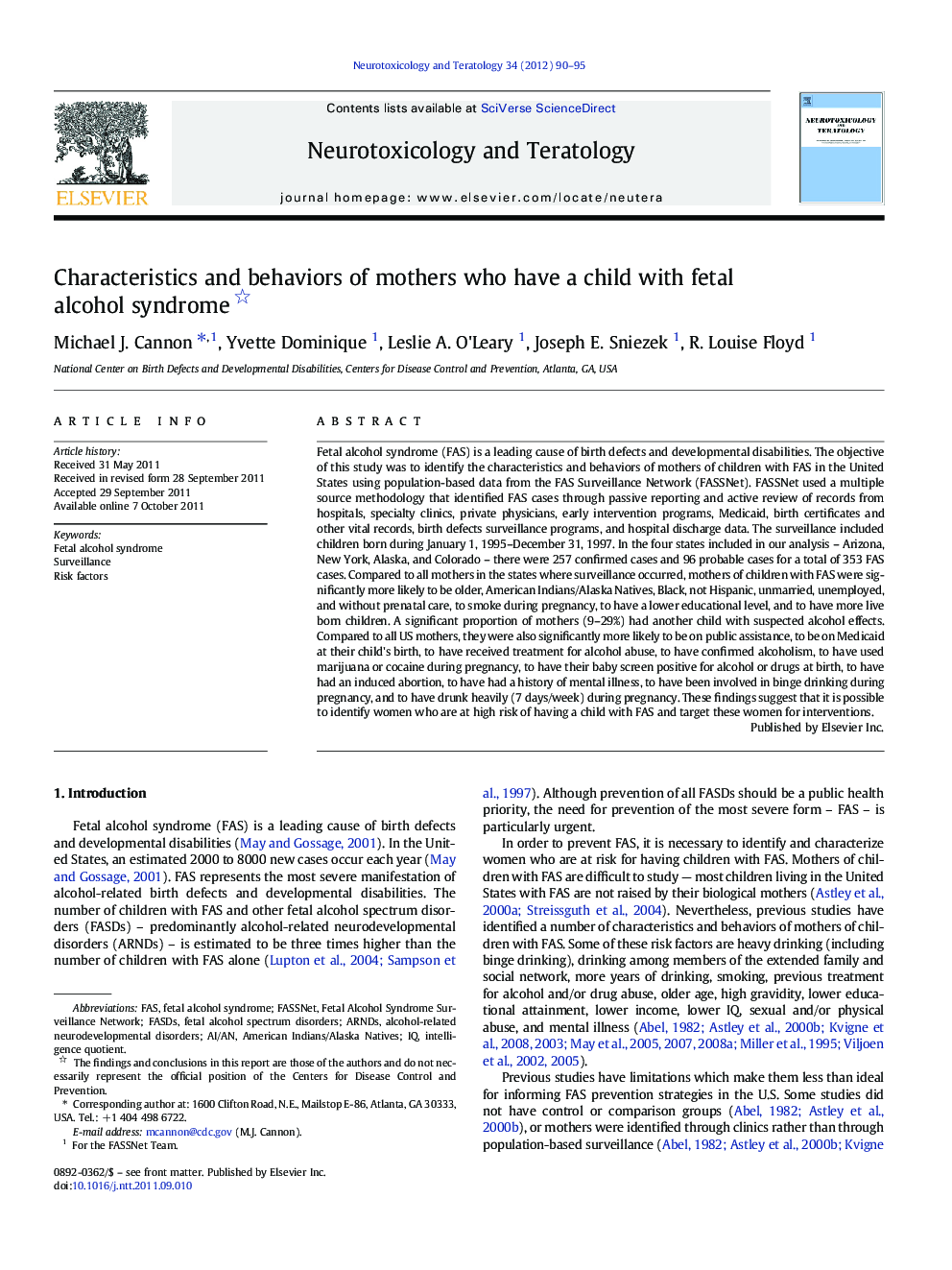| Article ID | Journal | Published Year | Pages | File Type |
|---|---|---|---|---|
| 2591116 | Neurotoxicology and Teratology | 2012 | 6 Pages |
Fetal alcohol syndrome (FAS) is a leading cause of birth defects and developmental disabilities. The objective of this study was to identify the characteristics and behaviors of mothers of children with FAS in the United States using population-based data from the FAS Surveillance Network (FASSNet). FASSNet used a multiple source methodology that identified FAS cases through passive reporting and active review of records from hospitals, specialty clinics, private physicians, early intervention programs, Medicaid, birth certificates and other vital records, birth defects surveillance programs, and hospital discharge data. The surveillance included children born during January 1, 1995–December 31, 1997. In the four states included in our analysis – Arizona, New York, Alaska, and Colorado – there were 257 confirmed cases and 96 probable cases for a total of 353 FAS cases. Compared to all mothers in the states where surveillance occurred, mothers of children with FAS were significantly more likely to be older, American Indians/Alaska Natives, Black, not Hispanic, unmarried, unemployed, and without prenatal care, to smoke during pregnancy, to have a lower educational level, and to have more live born children. A significant proportion of mothers (9–29%) had another child with suspected alcohol effects. Compared to all US mothers, they were also significantly more likely to be on public assistance, to be on Medicaid at their child's birth, to have received treatment for alcohol abuse, to have confirmed alcoholism, to have used marijuana or cocaine during pregnancy, to have their baby screen positive for alcohol or drugs at birth, to have had an induced abortion, to have had a history of mental illness, to have been involved in binge drinking during pregnancy, and to have drunk heavily (7 days/week) during pregnancy. These findings suggest that it is possible to identify women who are at high risk of having a child with FAS and target these women for interventions.
►We conducted population-based surveillance of mothers of children with FAS. ►These mothers were more likely to be racial/ethnic minorities and have low SES. ►They were also more likely to have behavioral challenges related to substance abuse. ►These high-risk women can be targeted by interventions to prevent FAS
